by Shireen Hunter
Popular demonstrations in Iran at the end of 2017 reflected economic and other grievances along with a growing frustration and impatience with the Islamic system’s shortcomings. However, the demonstrations also revealed deep cultural cleavages in Iranian society.
Some of Iran’s cultural divides are very deep rooted and are related to Iran’s Islamization after the Arab/Islamic conquest of the Sassanid Empire in 642 CE. Others are of more recent origin and developed with the start of Iran’s modernization in the late nineteenth century.
The most consequential divide in Iran is arguably around the relative place that Iran and Islam should have in its national identity, culture, and peoples’ loyalty. This dichotomy between Iran and Islam developed soon after Arab/Islamic invasion of Iran that shattered its cultural unity. Islamization did not eliminate the impact of Iranian culture and civilization from the country, which survived either in their original form or in a Islamicized version. Iran also was not linguistically Arabized and soon experienced a linguistic and literary renaissance.
Nevertheless, a divide emerged between those Iranians who remained faithful to Iranian traditions and culture, despite adopting Islam, and those who totally immersed themselves in Islam and even became to some degree Arabized and spoke slightingly of Persian language and traditions. The first group worked hard to revive the Persian language and traditions. This group included some non-Iranians who had become Persianized. For instance, some of Iran’s Turkic rulers encouraged the development of Persian literature and even helped spread Persian language and traditions beyond Iran’s traditional borders all the way to India.
In the sixteenth century under the Safavid rule, Iran became largely Shia, and a kind of synthesis between Iranianism and Islam developed. Some believe that Iranians embraced Shiism to distinguish themselves from Sunni Arabs. Others maintain that Shiism is Iranian nationalism in Islamic garb. Regardless of the viability of either of these views, a degree of convergence developed between Iran’s pre-Islamic traditions and Islam. Thus, the dichotomy between Iran and Islam largely disappeared.
Modernization ruptured this compact. Throughout the non-European world, people questioned the causes of their decline at the hands of European powers and the role that indigenous cultures might have played in it. In the Muslim world, many blamed Islam as partly responsible for Muslims’ decline.
In response, in countries such as Egypt and Iran that had highly developed cultures before Islam, interest in pre-Islamic cultures resurfaced. To arrest decline, Muslim modernizers in these countries recommended the revival of pre-Islamic cultures together with Europeanization. Meanwhile, the rise of European-style nationalism in Muslim countries became a significant rival for Islam as an identity marker.
The Modernization of Iran
Iran’s modernization in the 1930s and 40s by the first Pahlavi king, including the unveiling of women in 1937, revived the old dichotomy between Iran and Islam, which deepened in the following decades as the pace of modernization accelerated. The shah increasingly highlighted Iran’s ancient past by such events as the celebration of the 2,500 anniversary of the founding of the Persian Empire and the changeover of the Iranian calendar from an Islamic to a Persian historical calibration.
Modernization and the accompanying secularization created a cultural duality in the country and undermined the position of the clerical establishment. By the 1960s, some clergy openly attacked Iranian nationalism and declared it incompatible with Islam. Ayatullah Murtaza Mutahari warned that Iranians must choose between Islam and what he called “Aryan nationalism.”
After the 1979 revolution, the Islamic regime embarked on a cultural transformation to eliminate Iran’s old culture and traditions and re-Islamize it. Thus Iran’s Islamic leaders did not refer to the Iranian nation, only the Umat e-Islam. They attacked Iran’s pre-Islamic culture as belonging to the age of darkness and damaged its monuments. They vilified Firdausi, the chronicler of Pre-Islamic Iran and its culture, even trying to destroy his statute. They prohibited the use of pre-Islamic first names and discouraged people from celebrating the ancient Iranian New Year, Nowruz.
In the last two decades, the forced imposition of Islam coupled with the economic and political failures of the Islamic regime has reignited interest in Iran’s pre-Islamic past. The demand of some demonstrators that they want an “Iranian republic” and not an “Islamic republic” reflects this divide.
If the government in Tehran shifted in an Iran-focused direction, it would emphasize Iran’s national interests and not continue chasing after a pan-Islamic utopia. Iran would not be unnecessarily entangled in Arab affairs where it is not wanted. And it would not be at odds with Israel, a fact that has cost it so dearly.
Other Divides in Iran
Another divide in Iran is between secularism and religious Orthodoxy, reflected in disputes such as those over Islamic head cover, women’s admission to sports arenas, and solo female performers. Today, the number of people who believe in the separation of religion and politics are more numerous in Iran than they were before the revolution, partly because of the expansion of education to the traditional classes. The children of Islamists are now mostly secular.
The economic costs of this divide have been huge by limiting Iran’s access to benefits from foreign investments even before sanctions. Islamist hardliners fear that Western investment could cause cultural contamination. For similar reasons, Iran cannot expand its tourism and entice rich Western, Chinese, and Japanese tourists to visit the country.
Another cultural divide is between tradition and modernity. The Islamists want to retain a traditional, Islamic structure for society while also modernizing it economically and scientifically. This, however, is not possible. Successful modernization requires a degree of freedom of thought and rational approach to knowledge. Yet Islamists want to Islamicize science and impose limits to scientific inquiry.
Since the 1930, a left-Right struggle has also bedeviled Iran. The Islamic Revolution was the result of a coalition between Islamists and leftists. This coalition soon dissolved and led to a struggle between these two forces within and outside the regime, although both have gone through changes. Iran’s current factional disputes are in part a legacy of this split. The left’s main problem is its lack of adequate commitment to Iran’s interests. Like Islamists, Iran’s leftists emphasize their ideology rather than Iran’s national interests.
What makes these divides so dangerous for Iran’s future is that, in the Islamic republic, culture has been turned into ideology and thus has become closely linked to power. The power of the current ruling elite, including those leftists who joined the system, rests on the more traditional, religious, and anti-Iran culture. Any change in cultural issues would have significant implications for those who hold power in Iran.
Urgent Need for Compromise
The continuation of the current situation, especially the sidelining of specifically Iranian interests in favor of an ideologized Islam, could spell ruin for the country. Already, the pursuit of an Islamic utopia that has never existed has involved Iran in conflicts that really are of no real concern to it and has united Iran’s historic enemies with some new ones.
Therefore, if the country is to be saved, all sides should be willing to compromise and come to terms with Iran’s complex cultural realities. Sadly, Iran cannot hope to revive its old culture. Nationalists have to recognize that Islam is now very much part of the identity and culture of most Iranians. Modernizers and traditionalists must find an acceptable synthesis, and secularists and religious people must find a modus vivendi based on tolerance and respect for diversity. Mohammed Khatami and his Muslim reformers tried to bridge these divides, but they were defeated by hardliners and Islamists.
The fortunes of a significant part of the Islamic system are based on an exclusivist version of Islam, and this faction will not give up power easily. So, even without foreign enemies, Iran faces a difficult path ahead. The Supreme Leader can help to reconcile these differences by promoting a gentler Islam. But he is too stubborn to back down.
Photo: Iranian woman on cell phone with friends (Amir Farshad Ebrahimi via Flickr).

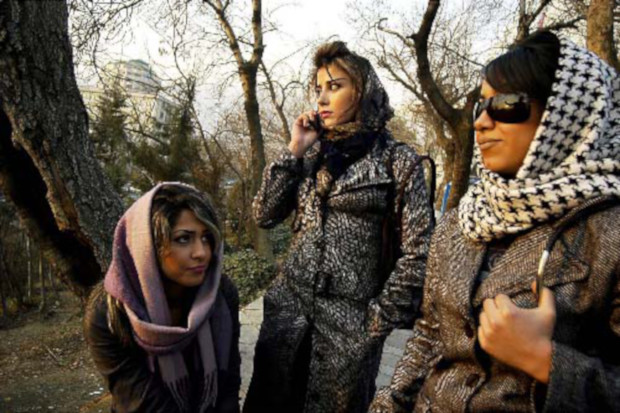
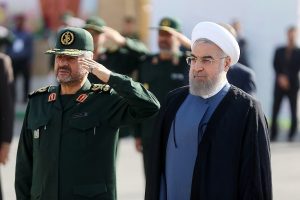
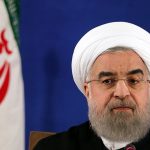
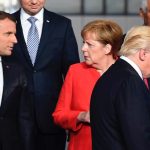
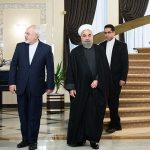
Interesting post , yet , the respectable author of that post, emphasizes too much , ideological , theoretical , cultural , historical issues , over , concrete geopolitical issues :
Starting with time line : The Islamic revolution , took place in 1979 , and one year ahead , and here we are with huge event : Iraq – Iran war ( 1980 ) . Now , from their point of view ( of the Iranians ) that war was driven and encouraged by the US . That war , was senseless aggression against Iran , and one of the utmost cruelest war , the mankind ever new ( besides world wars of course ) . Here we have , the seeds been planted of deep hatred and suspicions towards the west , and mainly the US , up to that day as we write .
During dozens of years , Iran is facing severe sanctions . Without those sanctions , Iran could be today , a mighty power , even super power . Even so , The Iranians , have reached significant scientific achievements , based on self reliance resources , one can only imagine what they could reach . They are aware of it , that those sanctions , are made for breaking them , and take them out of the game .
So , it is not in vain , that suspicions and hatred towards the US mainly , is deeply rooted within the Iranian regime . So , Islam per se , is not the only factor to observe here .
However , The author claims that an Islamic utopia generally speaking , never existed , well : We see the rise of the Jihad recently all over Muslim states , the establishment of IS , the Muslim world is unite against the Israeli state , several wars against the Israeli state were conducted , with many Muslim countries participating in it , and more ….
It is not at all an utopia with all due respect …. Neither a full scale reality or strict fact , yet , not utopia at all .
Thanks
Just for further reading , here :
Newsweek
” Iran Says U.S. ‘Even Worse’ Than ISIS After Bombing Supreme Leader’s Allies in Syria”
The Guardian
” Iran-Iraq war memories fuel Tehran vision ”
And to realize , the sources for such deep hatred and suspicion toward the US .
Thanks
Just for further reading , I have chosen the utmost remote continent ( remote in terms of geopolitical influence ) : The rise of Islamist groups in Africa ( back then in 2013 already ) here :
BBC news , bearing the title :
” Africa’s militant Islamist groups ”
And just to realize , that one may doubt , whether , since the great Muslim empire ( 600 BC and on ) we could witness such revival of Islam ( or extreme Islam , all over the world in fact ) .Up to that day , US and french troops , are deeply engaged there .
Thanks